The summer season is in full swing, and that means it’s time for camping! Luckily, camping is one thing you and your pup can enjoy together. There are a lot of things you need to keep in mind though to keep your dog safe, healthy, and happy on your camping trip. Here are 10 tips for camping with your dog so you can have the best possible camping experience.

#1 – Check in with the vet first
You’ll want to take your dog to the vet for a checkup to make sure he’s healthy enough for camping. If your vet spots arthritis or something, you’ll know you need to take it easy on the hikes. Your vet can also talk to you about what sort of parasite prevention or vaccinations your dog may need. Sometimes they’re exposed to things during camping they escape when living in the city (like ticks). This is also the perfect chance to get a copy of your dog’s vaccination and medical records so you can keep copies with you on your trip in case of emergency.
#2 – Protect your dog from parasites
Fleas, ticks, and heartworm-causing mosquitos might not be much of a problem where you live, but they might be a very big deal where you’re going hiking. Talk to your vet to ensure your dog is on appropriate parasite control before your camping trip.
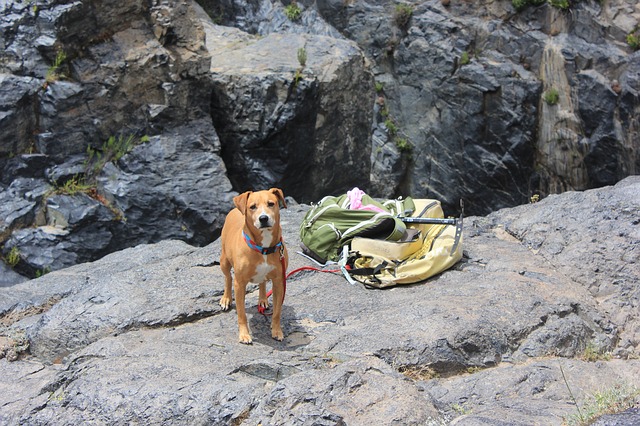
#3 – Train and condition your pup ahead of time
Every dog should have a strong “come” and “leave it” before going camping in order to keep them safe. There can be a lot more distractions and dangers in the wilderness than there are at home, so you need to make sure your dog will come when called leave it when asked. Other important commands that your pup should have mastered before your trip include “sit,” “stay,” and “down.” Unless you’re going deep into the backcountry, there are likely going to be other campers nearby, and you want your dog to be a shining example instead of a nuisance.
#4 – Make sure the campground and any hiking areas are dog-friendly
Many national parks don’t allow dogs, and many state parks and national forests that do allow dogs have restrictions about where they can go, whether or not they need to be leashed, and what you need to do with their poop. You don’t want to arrive at your campground and find out your fur child isn’t allowed, so do your research ahead of time.
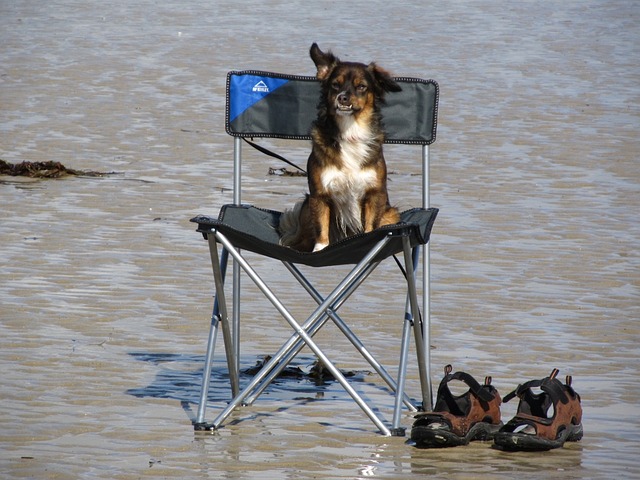
#5 – Add your dog’s supplies to your camping list
The last thing you want is to forget something important, so go ahead and add your dog’s food to the same list you have your underwear written on.
#6 – Be prepared to keep your dog cool
Heat stroke is a big problem for dogs, especially when you’re camping and there’s no AC. Make sure there’s always a shady place for your dog to lay down and your dog always has plenty of fresh water available. A Cooling Gel Dog Collar can really help your dog beat the heat.
#7 – Scoop his poop
Don’t ruin the outdoors for everybody else. Be responsible and pick up your pooch’s poo at all times. This unobtrusive Pick Pocket Pouch allows you to keep poop bags on your dog’s leash so you always have one ready when you need it.
#8 – Check your dog for ticks, foxtails, burrs, and thorns
There are so many things your dog can pick up in the great outdoors that can make him miserable. Check your dog once or twice a day while camping and again when you get home for things like fleas, ticks, foxtails, burrs, thorns, scratches, and anything else that appears out of the ordinary.
#9 – Stay together
Just because you heart dogs doesn’t mean that all people do. Your neighboring campers might not appreciate your pup wandering into their campsite, so keep your dog by you at all times, whether that’s by a leash or voice command.

#10 – Bring:
-First aid kit. This handy first aid kit is small enough to bring on any trip, even backpacking, and will help fix up minor injuries on either two- or four-legged members of your camping group.
-Current vaccination and medical records. Accidents happen. If you need to take your dog to a different vet after an emergency during your camping trip, his vaccination and medical records will be a big help to the unfamiliar vet.
–Collar with current ID tags. If your dog’s current collar is ratty, why not buy this patriotic one and help pair a veteran with a service dog?
-Leash. This hands-free leash is great for hiking.
-Tie-out. Sometimes you will need your dog to be tied to something other than yourself. Make sure to bring along a hammer to pound the tie-out into the ground at your campsite.
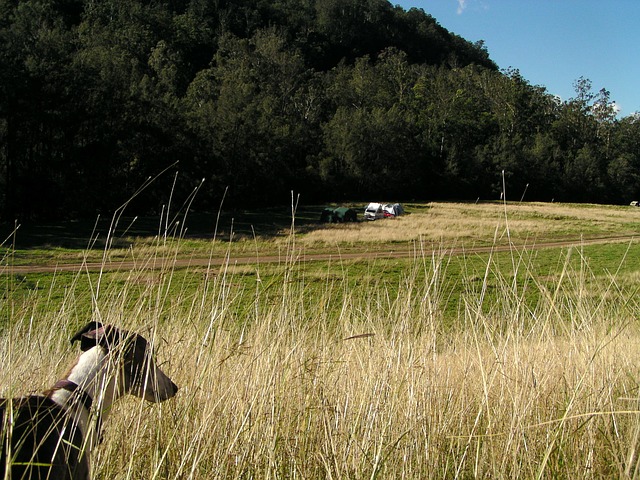
-Bowls. This foldable bowl is perfect for backpackers who need a compact, lightweight option. If you don’t need to keep your load as light, go for something multipurpose like the ThrowBowl™, the water bowl your pup can play with. It does double duty as a frisbee and a water bowl.
-Extra towels and blankets. However many towels and blankets you think you’ll need, include a couple of extras. You’ll want to make sure you can keep your dog – and the inside of your tent – dry and comfortable.
-Crate (optional). If your dog is crate trained, he may feel more comfortable in his crate than your tent. A foldable soft-sided crate is best if your dog won’t chew his way out of it.
-Toys. As much as your dog probably loves hiking with you, he’ll want something else to keep him busy at camp. The StickBall™ is a ball and stick combination that floats. It’ll satisfy any dog who loves to fetch, whether they prefer balls or sticks. If your dog is more of a chewer, the AgriChew™ can help keep him away from sticks that can splinter and cause an injury.
-Water and/or means to purify water. If you wouldn’t stick your face into a puddle and drink the water, you probably shouldn’t ask your dog to, either. Standing water is a major source of pathogens that can make your dog very sick. When deciding on how much water you need to bring for your trip, don’t forget to factor in how much your dog will need. Add extra because he’ll be more prone to dehydration and heat stroke while on a camping trip.
-Poop bags. Respect the environment and your fellow campers by picking up your dog’s waste. This poop bag dispenser comes with a roll of compostable poop bags.
-Dog backpack (optional). If you have a medium or large breed dog, a doggie backpack can help them carry their own food and water. Just be sure to get them used to it before your camping trip and don’t put more than 10-12% of your dog’s body weight in his pack, especially while he’s still getting used to it. That would be 6-7 pounds for a 60-pound dog.
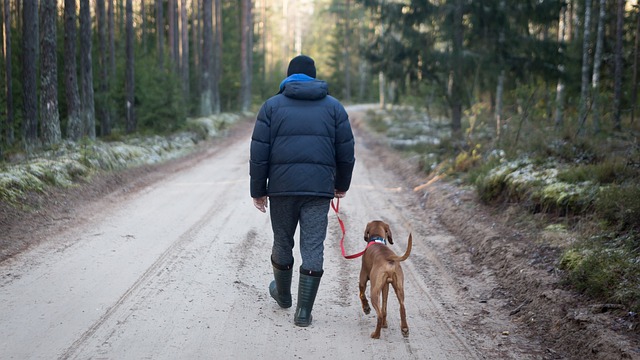
-Booties, jacket, life vest, LED collar light (optional). Your dog’s feet might not be used to the rocks, twigs, and other things you may encounter on a camping trip. Dog booties can help protect his feet. If your dog gets cold or wet easily, a jacket may be a great option. If you’re camping near water and your dog isn’t a strong swimmer, then a life vest would be a good idea. The best part of camping is getting away from the city lights, but that can make it hard to see your dog at night. This Nite Dawg LED safety collar can help you keep an eye on your dog in the dark.
-Food, treats, and supplements. Bring enough food, treats, and supplements to last your entire trip, with an extra day or two in case of emergency. Project Paws® Advanced Hip & Joint soft chews are a great option for dogs who are battling a bit of arthritis or hip dysplasia. Pronine™ Flora can help prevent diarrhea if your dog tends to get the runs when camping or has never had camping experience before. Nature’s Butter™ Paw Balm can soothe your pup’s feet if they get a little roughed up after a day of hiking. And don’t forget Project Paws® Single Ingredient Freeze Dried Treats!
(H/T: Daily Treat, Cesar’s Way, AAHA)

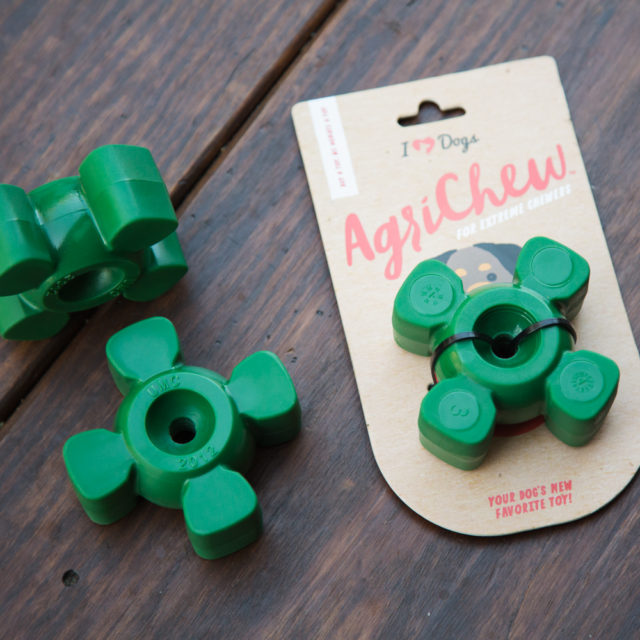
 These statements have not been evaluated by the Food and Drug Administration. This product is not intended to diagnose, treat, cure, or prevent any disease. The information on this website is not intended to replace a one-on-one relationship with a qualified healthcare professional.
These statements have not been evaluated by the Food and Drug Administration. This product is not intended to diagnose, treat, cure, or prevent any disease. The information on this website is not intended to replace a one-on-one relationship with a qualified healthcare professional. Toledo, United States.
Toledo, United States.